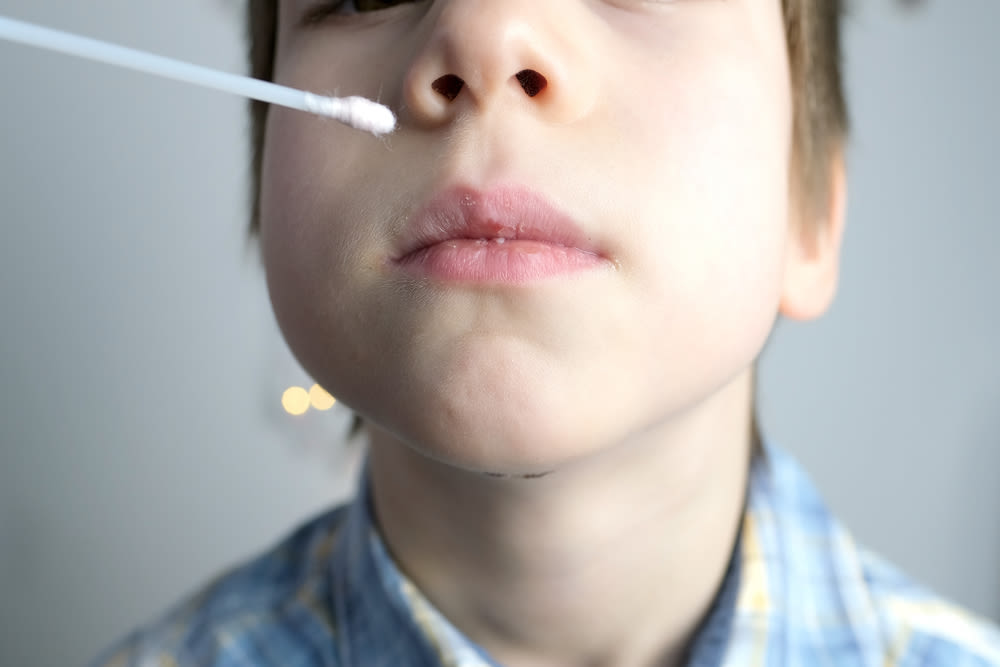What's the Holdup with COVID Screening at Oregon Schools?

Quick nasal swab screening tests for COVID-19, coming soon to a school in Oregon near you?
Image: Kittyfly/Shutterstock
In the sprawling Los Angeles Unified School District, every one of the 450,000 students in grades K-12—regardless of vaccination status—gets tested for coronavirus weekly. No test = no school.
In Massachusetts and Utah, in an effort to cut down on kids missing school for “just in case” quarantining, students who have been in close contact with people who’ve tested positive for COVID-19 get tested daily for at least five days post-exposure. If they’re negative, they can stay in school.
And in Washington, D.C., 10 to 20 percent of students in all K-12 schools will be randomly tested each week, to flag any infection rates that are higher than in surrounding communities.
All different approaches—and all of them up and running more quickly than in Oregon, where leaders say their top priority is to keep schools open, even as statewide, COVID-19 case numbers—while decreasing—remain distressingly high.
Oregon has announced plans for weekly screening testing of K-12 students, backed by $127 million in federal COVID relief. But so far, only 35 of the state’s 197 public school districts are enrolled in the student screening program, says Erica Heartquist, a spokeswoman for the Oregon Health Authority.
Enrollment for the K-12 student screening program didn’t open until August, just a month before the start of school and amidst the biggest surge of COVID-19 related hospitalizations that Oregon has seen since the start of the pandemic. That made getting things up and running “an enormous lift” for the five regional laboratories who will process tests sent in from their local districts, Heartquist says.
“Laboratories are working to onboard a large volume of enrollees in a timely manner,” says Heartquist. “It is important to recognize that our health care systems are under significant strain during this surge and acknowledge their service in providing this testing despite this strain.”
Portland Public Schools is one of the districts that has opted into the program, and announced that it will begin with elementary schools, where students are not yet eligible to be vaccinated. Screening testing is “intended to start within two weeks,” says district spokeswoman Karen Werstein, and will be offered at all K-5 schools, though not all schools will be starting at the same time. It’s not yet clear how schools will be prioritized for participation in the program.
Asked this week why the state has mandated that screen testing be opt-in instead of a Los Angeles-style mandate that requires families to make the effort to opt their students out, Oregon state epidemiologist Dean Sidelinger told reporters: “We have this as an opt-in because we know that schools, working with our local public health authorities, know best about the situation on the ground and can make decisions about opting in for entire schools, particular classrooms, particular activities that pose a higher risk, like sports that bring people into close contact over multiple hours, multiple days per week.”
The test-to-stay model, which officials in Utah estimated saved students there last year from missing more than 109,000 days of in-person instruction, is not off the table in Oregon, and could be considered after the state’s delta-propelled surge declines and testing supplies are more readily available, according to the Oregon Health Authority.
“Test to stay is one way in which testing can be used to help reduce COVID-19 transmission in schools, but it is not always appropriate,” Heartquist says. “Given the high levels of COVID-19 transmission and the national shortages of rapid antigen testing supplies, test to stay would not have been a safe option for our students at this time.”
Some experts have questioned the value of regular testing for asymptomatic students, pointing out that with masks, vaccinations, and ventilation upgrades, transmission of COVID has remained low at schools, and that such tests may yield false positives, causing some students to quarantine unnecessarily. But given the delta variation’s greater transmissibility, others say screening is now a key factor in getting—and keeping—schools open.




